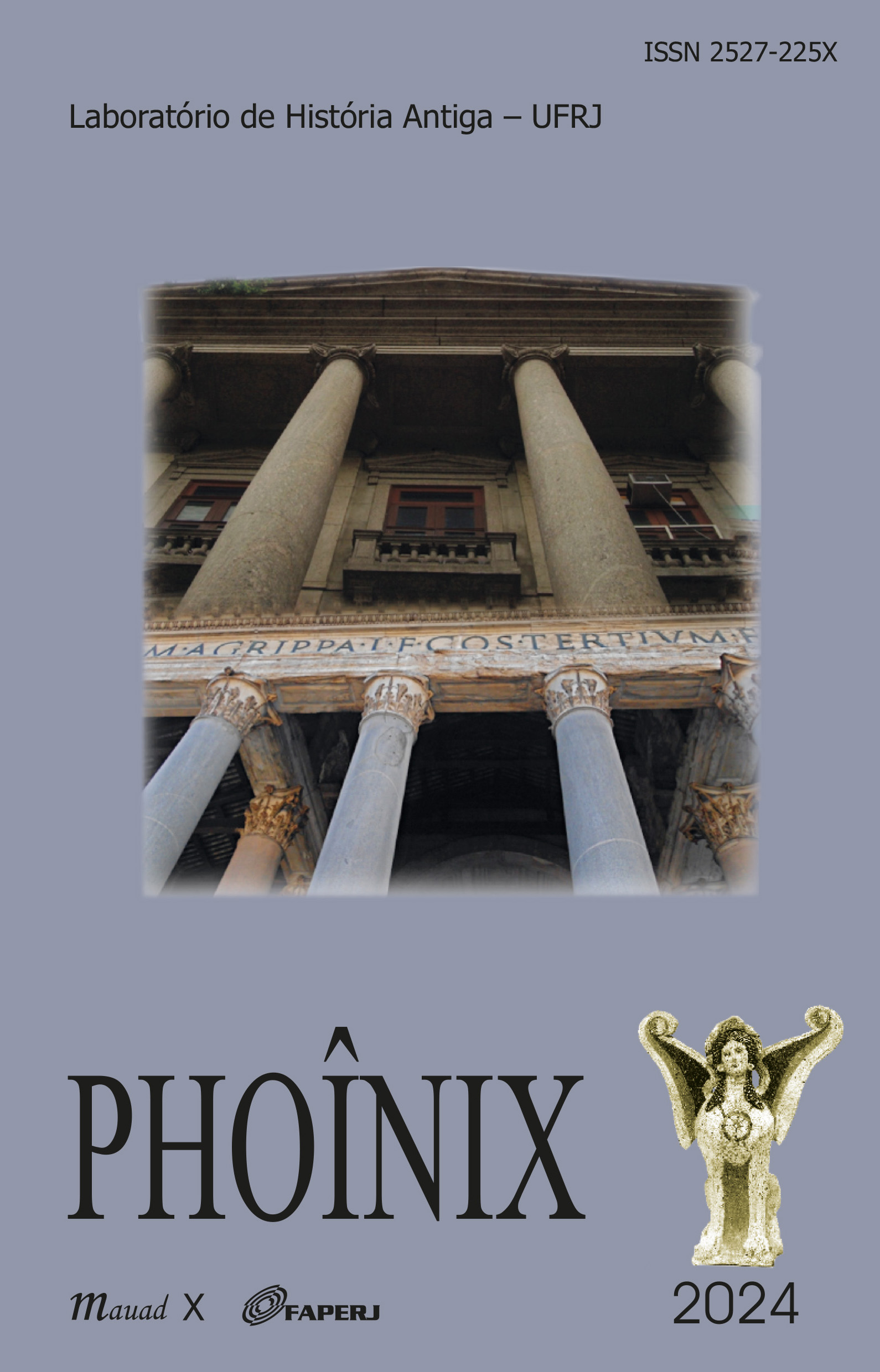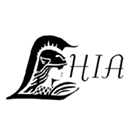A INVENÇÃO FEMININA DA AGRICULTURA NOS LIVROS DIDÁTICOS
Palavras-chave:
História das Mulheres, Pré-História, Ensino de HistóriaResumo
A descoberta do tempo profundo no século XIX e a criação do estudo da Pré-História como período de transição entre a animalidade e a humanidade, legaram a ela as origens das instituições e das práticas ditas fundamentais para o estabelecimento e a manutenção da civilização. No bojo do subsequente debate a respeito do controle da natureza pela domesticação animal e vegetal, alguns autores propuseram que a agricultura teria sido inventada por mulheres como consequência de uma divisão sexual do trabalho entre coletoras e caçadores. Este artigo identifica a presença de tal teoria e seus pressupostos nos livros didáticos de História, traça sua genealogia, referências e deficiências, e aponta possíveis interpretações sobre seus sentidos.
Referências
Documentação escrita
LUCRÉCIO. Sobre a Natureza das Coisas. São Paulo: Autêntica, 2021.
PORFIRIO. Sobre la Abstinencia. Madrid: Gredos, 1984.
Referências bibliográficas
ADOVASIO, Jim; SOFFER, Olga. O Sexo Invisível. Rio de Janeiro: Record, 2009.
BACHOFEN, Johann. Mother Right (1861). In: Myth, religion and mother right. New Jersey: Bollingen, 1967, p. 69-207
BARNABÉ, Luis Ernesto. De olho no presente: História Antiga e Livros Didáticos no século XXI. OPSIS, Catalão, v. 14, n. 2, p. 114-132, 2014.
BINFORD, Lewis. Post-Pleistocene adaptations. In: BINFORD, Sally; BINFORD, Lewis (orgs.). New Perspectives in Archaeology. Chicago: Aldine, 1968, p. 313-341.
BOULOS, Alfredo. História, Sociedade e Cidadania. São Paulo: FTD, 2018. BRAICK, Patrícia; BARRETO, Anna. Estudar História. São Paulo: Moderna, 2018.
BRAIDWOOD, Robert. The agricultural revolution. Scientific American, v. 203, p. 130-41, 1960.
BRAMI, Maxime. The Invention of Prehistory and the Rediscovery of Europe. Exploring the Intellectual Roots of Gordon Childe’s “Neolithic Revolution” (1936). Journal of World Prehistory, v. 32, p. 311-351, 2019.
CAMPOS, Flavio de; CLARO, Regina; DOLHNIKOFF, Miriam. História: escola e democracia. São Paulo: Moderna, 2018.
CASSIANO, Célia. O mercado do Livro didático no Brasil do século XXI. São Paulo: Editora Unesp, 2013.
CHEVITARESE, André. A caça na pólis ateniense nos períodos arcaico e clássico. Phoînix, n. 8, p. 24-48, 2002.
CHILDE, Vere Gordon. Man Makes Himself. London: Watts & Co., 1936.
CHOPPIN, Alain. História dos livros e das edições didáticas: sobre o estado da arte. Educação e pesquisa, São Paulo, v. 30, p. 549-566, 2004.
CIROTTEAU, Thomas; KERNER, Jennifer; PINCAS, Éric. Lady Sapiens. London: Hero, 2022. [2021]
COTRIM, Gilberto; RODRIGUES, Jaime. Historiar. São Paulo: Saraiva, 2018.
DAHLBERG, Frances (ed.). Woman the Gatherer. New Haven: Yale, 1981.
DARWIN, Charles. A Origem das Espécies. São Paulo: Ubu, 2018. [1859]
DIAKOV, Vladimir; KOVALEV, Sergei. História da Antiguidade. Lisboa: Estampa, s.d.
DIAS, Adriana; GRINBERG, Keila; PELLEGRINI, Marco. Vontade de Saber: História. São Paulo: Quinteto, 2018.
DURANT, Will. Story of civilization, I: Our oriental heritage. New York: Simon and Schuster, 1935.
EHRENBERG, Margaret. Women in Prehistory. London: British Museum, 1989.
ENGELS, Friedrich. A Origem da Família, da Propriedade Privada e do Estado. São Paulo: Boitempo, 2019. [1891]
FEDIGAN, Linda. The changing roles of women in models of human evolution. Annual Review of Anthropology, v. 15, pp. 25-66, 1986.
FERGUSON, Adam. An Essay on the History of Civil Society. Edinburgh: Edinburg UP, 1966. [1767]
FERNANDES, Ana Claudia (Ed.). Araribá mais: história. São Paulo: Moderna, 2018. FRAZER, James George. The Golden Bough. Part 5, v. 1. 3. ed. London: MacMillan, 1912.
FREITAS, Itamar. Livro Didático. In: FERREIRA, Marieta; OLIVEIRA, Margarida (coords.). Dicionário de Ensino de História. Rio de Janeiro: FGV, 2019, p. 143-148.
FREITAS, Luiz Carlos de. BNCC: os primeiros impactos nos materiais didáticos. In: Avaliação Educacional, 14 jun. 2017. Disponível em https://avaliacaoeducacional.com/2017/06/14/bncc-primeiros-impactos-nos-materiais--didaticos. Acesso em: 6 ago. 2021.
GAGE, Matilda Joslyn. Woman as an Inventor. The North American Review, v. 136, n. 318, p. 478-489, 1883.
GALZERANO, Luciana. A educação vai ao mercado financeiro: Somos Educação em debate. Revista HISTEDBR Online, Campinas, v. 21, p. 1-21, 2021.
GIMBUTAS, Marija. The Language of the Goddess. San Francisco: Harper & Row, 1989.
GÖTTNER-ABENDROTH, Heide. Matriarchal societies of the past and the rise of patriarchy. NY: Peter Lang, 2023. [2019]
GUERRA, Lolita. Há lugar na História para uma Era Matriarcal? Anais da Semana de História – UENP, Jacarezinho, 2020, p. 8-29.
____. Mulheres na Pré-História dos Livros Didáticos. Simpósio Nacional de História, ANPUH-Brasil, São Paulo, 2021a, p. 1-16.
____. Pequeno histórico do ‘matriarcado’ como hipótese para a interpretação da Pré-História. Mare Nostrum, v. 13, n. 01, p. 1-25, 2021b.
HAAS, Randall et al. Female hunters of the early Americas. Science Advances, v. 6, p. 1-10, 2020.
HARRISON, Jane Ellen. Prolegomena to the study of Greek Religion. Cambridge: Cambridge UP, 1903.
ISAAC, Glynn. The Food-sharing Behavior of Protohuman Hominids. Scientific American, v. 238, n. 4, p. 90-109, 1978.
KERGOAT, Danièle. Divisão sexual do trabalho e relações sociais de sexo. In: HIRATA, Helena et al. (orgs.). Dicionário Crítico do Feminismo. São Paulo: Editora Unesp, 2009, pp. 67-75. [2004]
KOLLONTAI, Alexandra. Catorce Conferencias en la Universidad Sverdlov de Leningrado. Ituzaingó: Cienflores, 2018. [1921]
KOVALEV, Sergei; DIAKOV, Vladimir. História da Antiguidade: A Sociedade Primitiva – O Oriente. Lisboa: Estampa, s/d.
LAFITAU, Joseph-François. Les Moeurs des sauvages amériquains comparées aux moeurs des premiers temps. Paris: Saugrain, 1724.
LEE, Richard; DEVORE, Irven. Man the hunter. New York: Aldine, 1968.
LINTON, Sally. Woman the Gatherer (1971). In: REITER, Rayna (ed.). Toward an Anthropology of Women. New York: Monthly Review Press, 1975, p. 36-50.
LIVERANI, Mario. Antigo Oriente. São Paulo: Edusp, 2016.
LOVEJOY, Arthur; BOAS, George. Primitivism and related ideas in Antiquity. New York: Octagon Books, 1965. [1935]
LOVEJOY, Owen. The origin of Man. Science, v. 211, n. 4480, 1981.
LUBBOCK, John. Prehistoric Times. London: William & Norgate, 1865.
LYELL, Charles. The Geological Evidences of the Antiquity of Man. London: John Murray, 1863.
MEEK, Ronald. Social Science and the Ignoble Savage. Cambridge: Cambridge UP, 1976.
MESKELL, Lynn; NAKAMURA, Carolyn. Articulate bodies: forms and figures at Çatalhöyük. Journal of Archaeological Method and Theory, v. 16, 2009.
MESKELL, Lynn; PEARSON, Jessica. Isotopes and Images: Fleshing out Bodies at Çatalhöyük. Journal of Archaeological Method and Theory, v. 20, n. 3, 2013.
MOLLESON, Theya. The Eloquent Bones of Abu Hureyra. Scientific American, v. 271, n. 2, p. 70-75, 1994.
MOTOOKA, Débora Yumi. Geração Alpha. História. São Paulo: SM, 2018.
MÜLLER, Johannes. Geschichte der amerikanischen Urreligionen. Basel: Wieland, 1855.
PATOU-MATHIS, Marylène. O homem pré-histórico também é mulher. Rio de Janeiro: Rosa dos Tempos, 2022. [2020]
PEYRE, Evelyne; WIELS, Joëlle. Le sexe biologique et sa relation au sexe social. Les Temps Modernes, n. 593, p. 1-21, 1997.
POCOCK, John. Barbarism and Religion. V. IV: Barbarians, Savages and Empires. Cambridge: Cambridge UP, 2005.
RENFREW, Colin. Prehistory: The Making of the Human Mind. New York: The Modern Library, 2007.
RIBEIRO, João. História Antiga I: Oriente e Grécia. Rio de Janeiro: Alves e Cia., 1984. RINDOS, David. The Origins of Agriculture: An evolutionary perspective. San Diego: Academic Press, 1984.
SANAHUJA, Encarna. La cotidianeidad en la prehistoria. Barcelona: Icaria, 2007.
SCOTT, Joan. Gênero. Uma categoria útil de análise histórica. Educação e Sociedade, v. 20, n. 2, p. 71-99, 1995. [1988]
SERIACOPI, Reinaldo; AZEVEDO, Gislane. Inspire História. São Paulo: FTD, 2018.
SMAIL, Daniel Lord. On deep history and the brain. Berkeley: University of California Press, 2008.
SILVA, Gilvan; GONÇALVES, Ana Teresa Marques. Algumas reflexões sobre os conteúdos de História Antiga nos livros didáticos brasileiros. História & Ensino, Londrina, v. 7, p. 123-142, 2001.
SUMNER, William Graham. The Science of Society. New Haven: Yale UP, 1927.
TANNER, Nancy; ZIHLMAN, Adrienne. Women in evolution. Part I: Innovation and selection in human origins. Signs, v. 1, p. 585-608, 1976.
TEGGART, Frederick. The Idea of Progress. Berkeley: University of California, 1949.
TRIGGER, Bruce. História do Pensamento Arqueológico. São Paulo: Odysseus, 2004. [1989]
TUCKER, Aviezer. Historiographic Revision and Revisionism. In: KOPEČEK, Michal (ed.). Past in the Making. Historical Revisionism in Central Europe after 1989. Budapest: Central European UP, 2008, p. 1-15.
VAINFAS, Ronaldo; FERREIRA, Jorge; FARIA, Sheila; CALAINHO, Daniela. História.doc. São Paulo: Saraiva, 2018.
VICENTINO, Cláudio; VICENTINO, José Bruno. Teláris. São Paulo: Ática, 2018.
WASHBURN, Sherwood; LANCASTER, Chet; The evolution of hunting. In: LEE, Richard; DEVORE, Irene (eds.). Man the hunter. New York: Aldine, 1968, p. 293-303.
WELCKER, Friedrich Gottlieb. Die Aeschylische Trilogie Prometheus und die Kabirenweihe zu Lemnos. Darmstadt: Leske, 1824, p. 585-602.
WIBER, Melanie. Erect men/undulating women: the visual imagery of gender, “race” and progress in reconstructive illustrations of human evolution.
Waterloo: Wilfrid Laurier UP, 1997.
ZIHLMAN, Adrienne. Women in evolution. Part II: Subsistence and social organization among early hominids. Signs, v. 4, p. 4-20, 1978.
____. Women as shapers of human adaptation. In: DAHLBERG, Frances (ed.). Woman the Gatherer. New Haven: Yale, 1981, p. 75-120.
Downloads
Publicado
Como Citar
Edição
Seção
Licença

Este trabalho está licenciado sob uma licença Creative Commons Attribution-NonCommercial 4.0 International License.
Ao encaminhar textos à Revista Phoînix, o autor estará cedendo integralmente seus direitos patrimoniais da obra à publicação, permanecendo detentor de seus direitos morais (autoria e identificação na obra), conforme estabelece a legislação específica.
O trabalho publicado é considerado colaboração e, portanto, o autor não receberá qualquer remuneração para tal, bem como nada lhe será cobrado em troca para a publicação.
Os textos são de responsabilidade de seus autores. Citações e transcrições são permitidas mediante menção às fontes.
O uso dos textos publicados em nossa revista poderão ser distribuídos por outros meios, desde de que atribuídos devidamente à autoria e publicação. A revista está vinculada à licença CCBY-NC (atribuição não-comercial, conforme o Creative Commons).


































